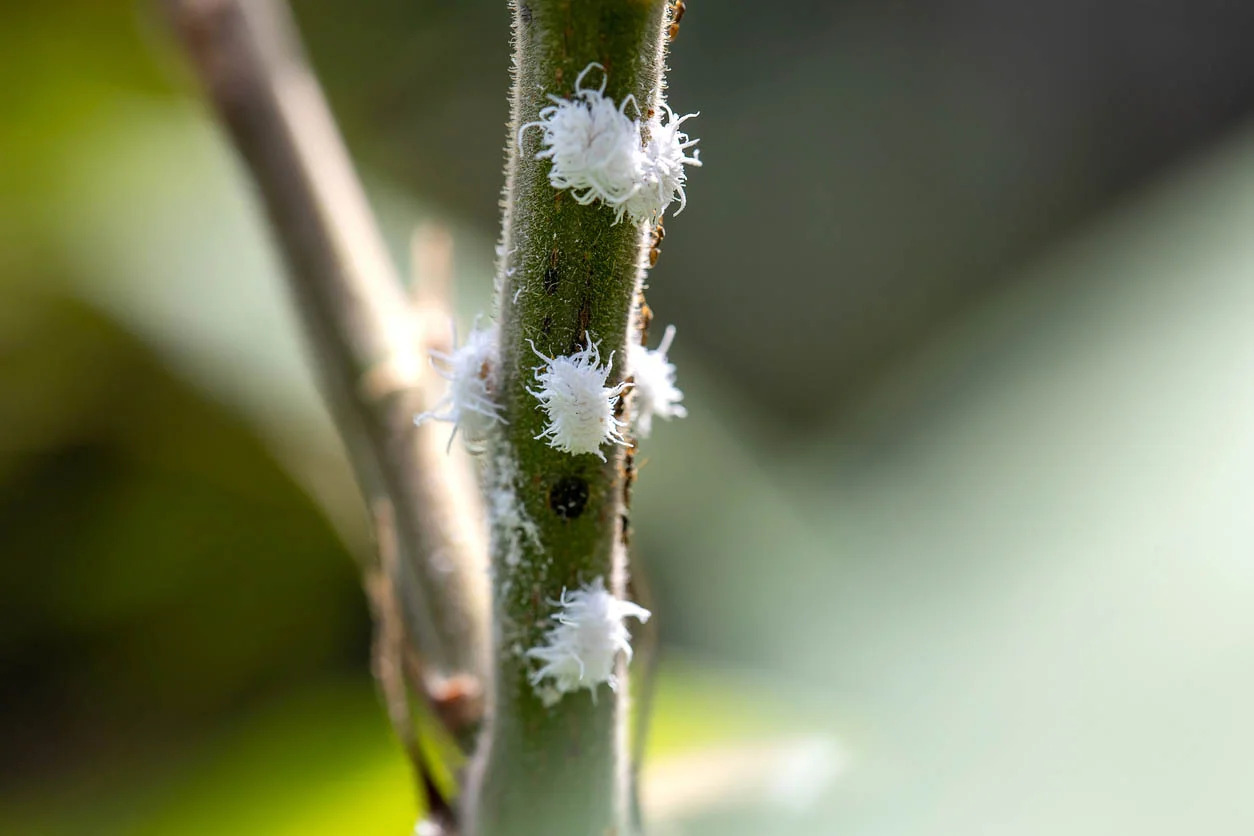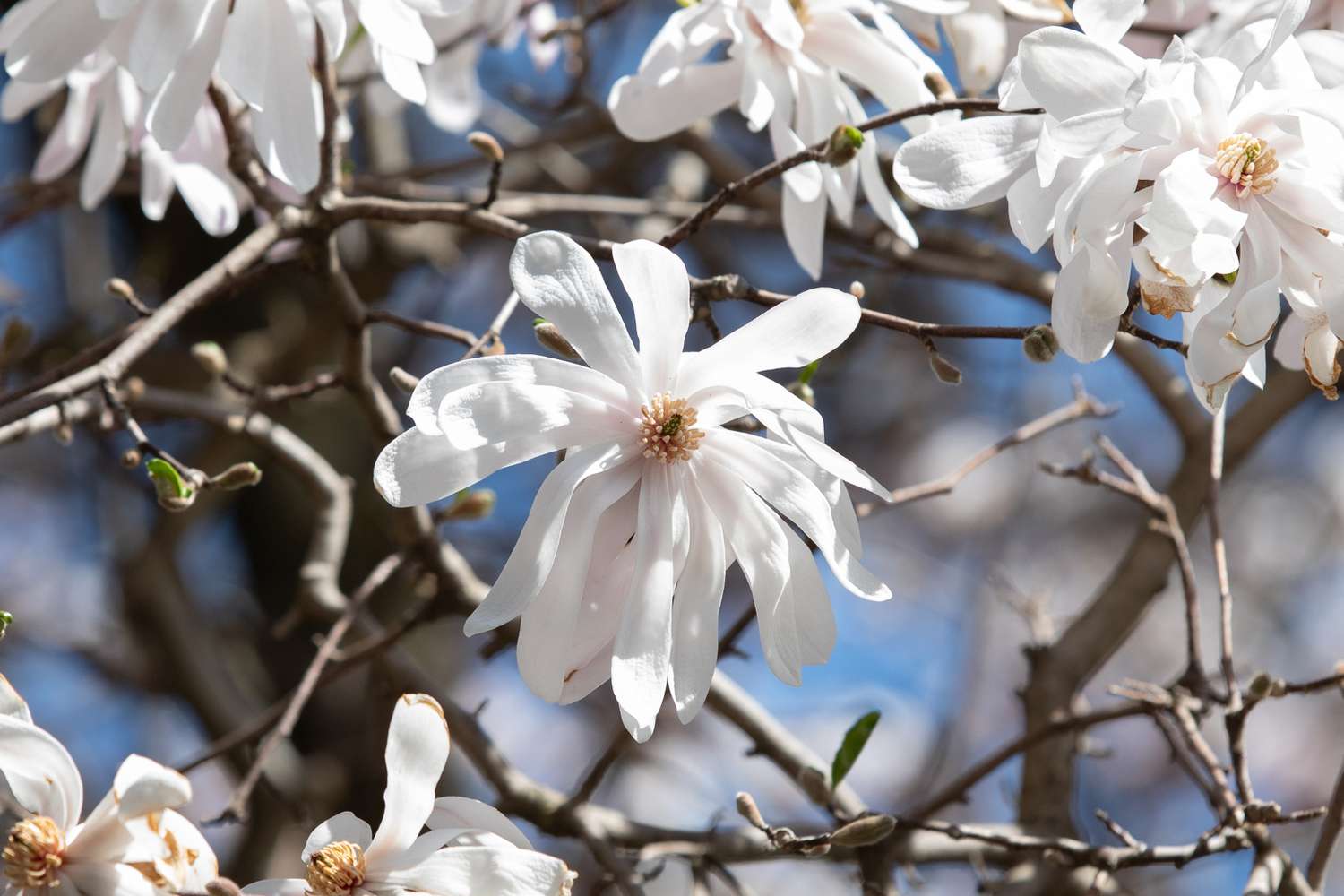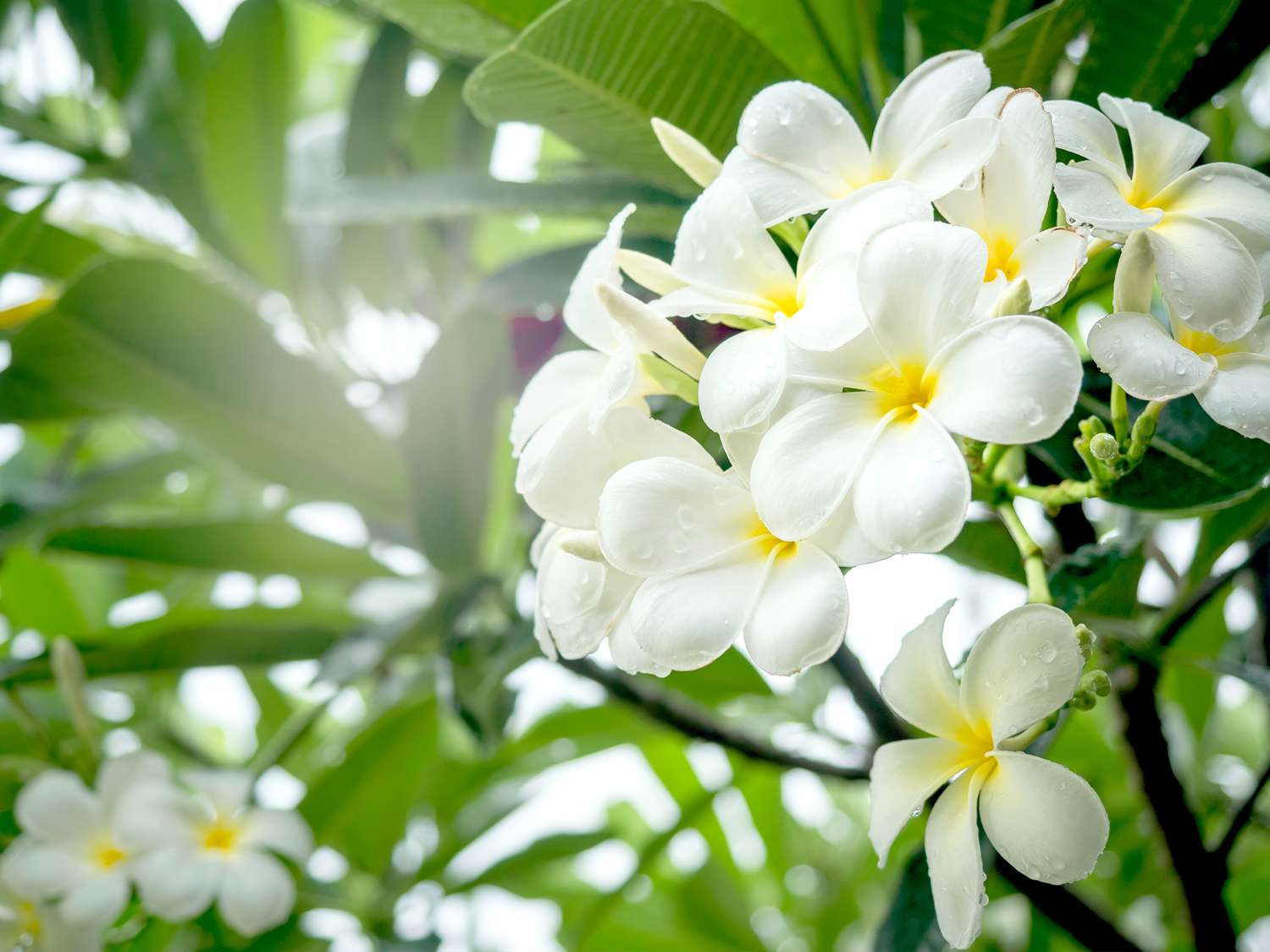Home>Gardening News and Trends>What Flowers Give White Dye


Gardening News and Trends
What Flowers Give White Dye
Modified: January 22, 2024
Discover the latest news on what flowers give white dye. Explore various flower options and their dyeing properties for your creative projects.
(Many of the links in this article redirect to a specific reviewed product. Your purchase of these products through affiliate links helps to generate commission for Chicagolandgardening.com, at no extra cost. Learn more)
Table of Contents
Introduction
White dye has long been sought after for its pure and timeless elegance. The color white symbolizes purity, innocence, and clarity, making it a popular choice for various applications, from fashion and textiles to interior design and art. While white dye can be derived from synthetic sources, there is a growing interest in natural alternatives that are eco-friendly and sustainable.
In this article, we explore the fascinating world of flowers that produce white dye. The intricate process of extracting white dye from flowers has been practiced for centuries, and it continues to capture the imagination of artisans, designers, and enthusiasts alike.
We will delve into the methodology behind obtaining white dye from flowers and highlight some of the most commonly used flowers for this purpose. Additionally, we will provide insights into the techniques for extracting and using white dye, and showcase the wide range of applications for this versatile color.
No matter your interest in white dye, whether you are a curious hobbyist, a creative professional, or simply someone who appreciates the beauty of nature, this article will serve as a guide to uncover the enchanting world of flowers that give white dye.
Methodology
The process of obtaining white dye from flowers involves several key steps to extract the pigment and transfer it onto different materials. While the specific methodology may vary depending on the flower and the desired outcome, there are some general techniques that are commonly used.
The first step in the methodology is selecting the appropriate flowers. Certain flowers contain natural pigments that can produce vibrant and long-lasting white dye. Flowers such as chamomile, jasmine, gardenia, elderflower, and yarrow are known for their white dye properties.
Once the flowers are selected, the next step is to prepare them for extraction. This typically involves drying the flowers to remove any excess moisture and enhance the concentration of the pigment. The dried flowers are then crushed or ground to a fine powder, making it easier to extract the dye.
The extraction process involves steeping the crushed flowers in a liquid solvent, such as water or alcohol. This allows the pigment to dissolve and transfer into the solvent. The mixture is then heated and carefully monitored to ensure the optimal extraction of the white dye.
After the extraction process, the resulting liquid is filtered to remove any solid particles or impurities. The filtered white dye solution is then ready to be used for various applications.
Another method of obtaining white dye is through a fermentation process. In this technique, the flowers are soaked in water and left to ferment over a period of time. The natural fermentation process breaks down the flowers and releases the white pigment, which can then be collected and used as dye.
It is important to note that the methodology for extracting white dye from flowers may require some experimentation and adjustment based on the specific flower and the desired intensity of the color. Additionally, different materials may require variations in the dyeing process to achieve the desired results.
Overall, the methodology for obtaining white dye from flowers is a delicate and precise process that requires careful attention to detail and a deep understanding of the unique properties of each flower variety.
Flowers that Produce White Dye
Several flowers are renowned for their ability to produce exquisite white dye. These flowers contain natural pigments that can be extracted and used to create a range of beautiful and vibrant white hues. Here are some of the most commonly used flowers for obtaining white dye:
- Chamomile: Chamomile flowers are known for their delicate white petals, which can be used to create a soft and subtle white dye. Chamomile tea is also widely used as a natural fabric whitening agent.
- Jasmine: Jasmine flowers not only emit a delightful fragrance but also possess white petals that can yield an enchanting white dye. The extracted dye can be used in perfumery and for dyeing textiles.
- Gardenia: Gardenia flowers produce creamy white blooms that contain a rich pigment that can be transformed into a vibrant white dye. The resulting dye is often used in cosmetics and candle-making.
- Elderflower: Elderflower blossoms boast beautiful clusters of tiny white flowers that can be used to create a subtle white dye. The extracted dye is commonly used in the production of beverages, confectionery, and natural cosmetics.
- Yarrow: Yarrow flowers, with their delicate white flower heads, can produce a pale white dye that has a hint of yellow undertones. The dye is often utilized in herbal medicine and natural dyeing.
These flowers offer a wide range of white hues, from pure and bright white to softer and more muted tones. The choice of flower for obtaining white dye depends on the desired shade and the specific application.
It is important to select fresh and high-quality flowers for dye extraction, as the quality of the flowers can greatly impact the color and intensity of the resulting white dye. Experimentation with different flowers and their combinations can lead to unique and personalized shades of white.
Remember, the potential for creating stunning white dye from flowers is not limited to this list. Many other flowers, including lilies, daisies, and roses, possess white petals that can be explored for their dye-producing properties.
How to Extract White Dye from Flowers
Extracting white dye from flowers involves a systematic process that ensures the maximum extraction of pigment for vibrant and long-lasting results. Here are the general steps to follow:
- Prepare the flowers: Start by selecting fresh flowers with white petals. Remove any green parts or stems from the flowers, as they can affect the purity of the dye. It is recommended to work with freshly picked flowers for the best color extraction.
- Drying: If necessary, dry the flowers to increase the concentration of the pigment. This can be done by spreading the flowers in a single layer on a clean and dry surface. Allow them to air dry for several days until they are completely dried out.
- Crushing or grinding: Once the flowers are dried, they can be crushed or ground into a fine powder. This can be done using a mortar and pestle or a grinder. The finer the powder, the easier it will be to extract the dye.
- Extraction: Place the crushed flowers in a large pot or container and add a solvent such as water, alcohol, or vinegar. The choice of solvent depends on the desired intensity and properties of the dye. Add enough solvent to cover the flowers completely.
- Heating: Gently heat the mixture of flowers and solvent over low to medium heat. This helps to release the pigment from the flowers and dissolve it in the solvent. Stir the mixture occasionally to ensure even distribution of the pigment.
- Straining: After heating for a designated time (usually between 30 minutes to a couple of hours), strain the liquid to remove any solid particles or flower remnants. Use a fine-mesh strainer or cheesecloth for this process.
- Storage: Transfer the strained liquid, which now contains the white dye, into a clean container. Store it in a cool and dark place to maintain its color and quality. Label the container with the type of flower used and the date of extraction for future reference.
Keep in mind that the exact extraction process may vary depending on the flower and the desired outcome. Some flowers may require longer extraction times or specific variations in the process. It is recommended to consult specific dye recipes or experts in natural dyeing for more precise instructions.
With the extracted white dye in hand, you are now ready to explore the various techniques for using this beautiful and versatile color.
Techniques for Using White Dye
White dye offers endless possibilities for creative expression and can be used in various techniques to achieve stunning results. Here are some common techniques for using white dye:
- Dip Dyeing: Dip dyeing involves immersing a fabric or material partially into a dye bath to create a gradient or ombré effect. With white dye, you can achieve a subtle and elegant look by dip dyeing fabrics such as cotton, linen, or silk.
- Block Printing: Block printing is a technique where a carved block is used to apply dye onto fabric. You can create beautiful white patterns and designs on clothing, home textiles, or paper using white dye and a block carved with your desired pattern.
- Tie-Dye: Tie-dyeing is a popular technique that involves folding, twisting, or tying fabric to create unique patterns. White dye can produce striking results on colored fabrics, resulting in a vibrant white pattern against a colorful background.
- Screen Printing: Screen printing utilizes a stencil-like screen to apply ink or dye onto fabric. With white dye, you can create intricate and detailed designs on various materials, including clothing, accessories, and home decor items.
- Shibori: Shibori is a Japanese dyeing technique that involves binding, stitching, or folding fabric to create resist patterns. White dye can be used to create beautiful and intricate designs on fabrics using different shibori methods.
- Painting: White dye can be used as a paint to create custom designs and patterns on fabrics, canvas, or other materials. It allows for precise control over the intensity and placement of the white color.
- Natural Dye Baths: White dye can also be used as a natural whitening agent in dye baths. By adding a small amount of white dye to other natural dye baths, you can achieve lighter shades and pastel hues.
These techniques offer just a glimpse into the creative possibilities of using white dye. Experimentation and combining techniques can lead to unique and personalized outcomes. Don’t be afraid to explore different materials, color combinations, and application methods to achieve the desired effect.
Remember, when working with white dye, it is essential to follow proper safety precautions and instructions. Wear protective clothing and gloves, work in a well-ventilated area, and dispose of any waste materials responsibly.
Now, armed with the knowledge of various techniques, you can unleash your creativity and bring the beauty of white dye to your artistic endeavors.
Applications of White Dye
White dye holds a prominent place in various industries and creative pursuits due to its versatility and timeless appeal. The following are some of the common applications of white dye:
- Fashion and Textiles: White dye is widely used in the fashion industry for creating garments, accessories, and home textiles. It lends an elegant and classic look to fabrics such as cotton, linen, silk, and lace. White garments are often favored for their versatility and ability to be dressed up or down for any occasion.
- Interior Design: Within the realm of interior design, white dye is utilized to create a clean and timeless aesthetic. It is commonly used for upholstery, drapery, bedding, and other textile elements in home decor. White dye can help create an airy and light atmosphere, making spaces appear more spacious and inviting.
- Art and Mixed Media: Artists can incorporate white dye into their work as a primary color or for creating various effects. From paintings and drawings to sculptures and installations, white dye adds depth, contrast, and highlights to artwork. It can be used to create subtle shadows, highlight details, or create a striking focal point.
- Paper and Stationery: White dye is also used in the production of high-quality paper and stationery products. It provides a clean canvas for writing, drawing, and printing. White paper is widely used in various industries, including publishing, printing, and packaging.
- Cosmetics and Personal Care: White dye finds its way into the formulation of cosmetics and personal care products. It is used as a base color for foundations, powders, lotions, and creams. White dye can help achieve a light and natural appearance, serving as the canvas for other makeup products.
- Candle Making: White dye is commonly used in candle making to produce elegant and minimalist candles. Whether creating pillar candles, tapered candles, or votives, white dye can render a serene and soothing ambiance in any room.
- Weddings and Events: White is a popular choice for weddings and special occasions due to its symbolism of purity and elegance. White dye is used for creating wedding gowns, bridesmaids’ dresses, table linens, floral arrangements, and other decorative elements, adding a touch of sophistication to the overall aesthetic.
The applications of white dye extend beyond these examples, finding their way into numerous other industries and creative pursuits. Its timeless appeal and ability to complement various colors make it a versatile choice for a wide range of projects.
Whether in fashion, art, design, or everyday items, white dye continues to play a significant role in bringing a sense of beauty, purity, and sophistication to our lives.
Conclusion
The world of white dye is a captivating one, filled with the beauty and elegance of nature. Flowers that produce white dye offer a sustainable and eco-friendly alternative to synthetic dyes, allowing us to embrace the purity and timelessness of this color.
Throughout this article, we have explored the methodology of extracting white dye from flowers, highlighting some of the commonly used flowers for this purpose. We have delved into the techniques for extracting and using white dye, and discussed its wide range of applications in fashion, textiles, interior design, art, and more.
From chamomile and jasmine to gardenia and yarrow, each flower offers its own unique characteristics and hues of white. The process of extracting the white dye requires careful attention to detail, but the end results are worth the effort. Whether dip dyeing, block printing, tie-dyeing, or employing other techniques, white dye allows for boundless artistic expression.
White dye finds its place in various industries and creative pursuits, from fashion and interior design to art and cosmetics. It brings a sense of purity, simplicity, and sophistication to the products and artworks we encounter in our daily lives.
As we continue to seek eco-friendly alternatives and embrace the beauty of nature, exploring the possibilities of flowers that offer white dye becomes increasingly important. By incorporating white dye into our creations, we not only contribute to a more sustainable future but also enhance the aesthetic appeal and timeless elegance of our work.
So, let us embark on a journey of discovery, using the enchanting world of flowers that give white dye to inspire, create, and leave a lasting impression.




